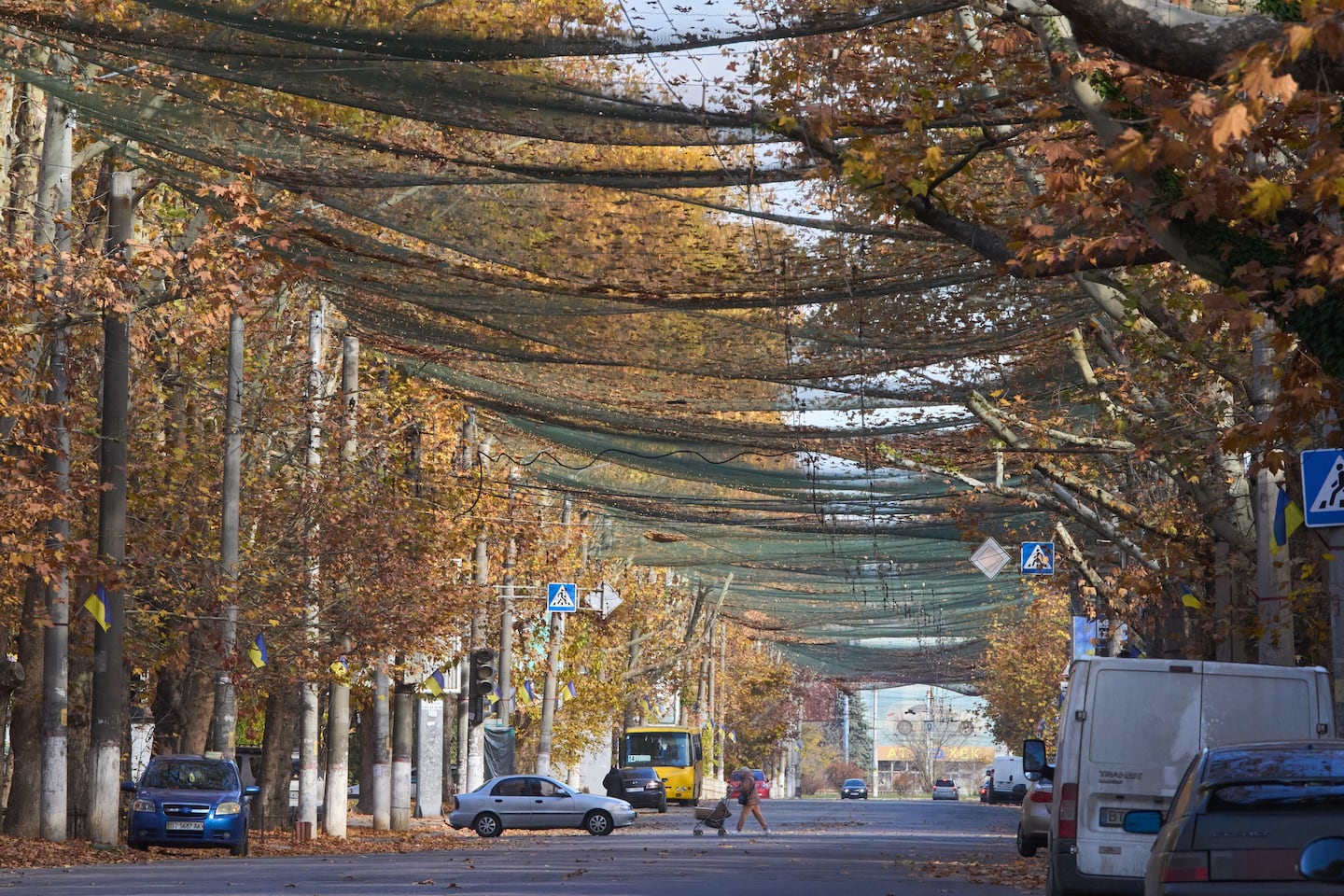Copyright The Boston Globe

Still, those who stayed insist that even the life in a mostly empty and shuttered city is easier than living under Russia. A recent visit by Angelina Jolie was a welcome morale boost for residents whose daily challenge to survive was highlighted by photos showing the American actor in a basement and on a street shielded by narrow corridors of mesh overhead, needed to protect civilians from drones. Once home to nearly 280,000 people, Kherson has become a forgotten stretch of the front line, where explosions echo daily beneath billboards that still read: “City of strength, freedom and resilience.” The small flower kiosk of 55-year-old Olha Komanytska stands out against the bomb-scarred center of Kherson. Her red and white roses spill from tall buckets — a surreal burst of color on a corner that once drew steady crowds but now sees only a few customers. “Hardly anyone buys flowers,” she says. “We’re just trying to make it through.” For nearly 30 years, Komanytska and her husband grew flowers in Kherson’s countryside. The kiosk is all that’s left after their greenhouses were destroyed. She wears a black headscarf to mourn him. He died of a heart condition, but she believes the war pushed him toward it. Her eyes fill with tears as she speaks of him, and she admits she can’t stay long at his grave. “Not more than five minutes,” she says, adding that it’s because of drone danger. But at her stand, the security is no better. Once, a shell flew right over her head. She survived only because she bent down, she says, pointing to the pane of cracked glass she later covered to hide the damage. Like many in Kherson, Komanytska has learned the city’s new rules of survival. She can tell every weapon by its sound — artillery, rockets, bombs — but drones, she says, are the worst. She now closes early and walks home pressed to the walls, sometimes hiding under trees to escape their “eyes.” She mimics the sound — a low, screeching whine. “They’re always searching” for a target, she says. “At night I walk home, and they’re above me. You just run. Before, you could hide under trees. Now … I don’t know where to hide.” The only time her somber face softens into a smile is when she remembers the city’s liberation. “That day was amazing,” she says, repeating the word several times, as if to make it real again. On a crisp autumn day, yellow leaves gather on the mesh above the street as municipal workers stretch more nets — the same plastic mesh once used on construction sites, now repurposed to shield civilians from drones. At one hospital, the entrance is wrapped entirely in protective netting — along the sides, overhead and around the perimeter, with only a narrow passage left for staff and patients. Officials say such sites, where civilians gather in large numbers, are top priorities because they’re often targeted. Despite the constant tension, a petrifying alertness in the air, the city remains alive. Post offices still operate, though their entrances are blocked by concrete slabs meant to absorb blasts. At bus stops, where transport continues despite the risks, small cement bunkers stand ready — reminders that shelling can come at any moment. Above the nets, an invisible shield protects Kherson. It’s the city’s electronic warfare systems that use radio signals to detect, jam or disable enemy drones. Max, 28, who declined to give his full name for security reasons, serves in the 310th Separate Marine Electronic Warfare Battalion, which is responsible for the electronic shield over Kherson and the region. He has worked in electronic warfare for two-and-a-half years as the field has grown increasingly critical. His front-line post looks more like a programmer’s workspace: computer screens display maps and data feeds while voices from neighboring units echo through the room. Max said the job is to detect targets and make sure they fail their missions — whether “drones hunting civilians, infrastructure, vehicles or even humanitarian convoys.” He says up to 250 FPV drones can head toward Kherson in just half a day. Yet Max’s unit intercepts more than 90% from his gamer-style workstation. “When you see a strike hit a soldier or a civilian, it hurts you — it weighs on your soul. You want to do everything possible to make sure it never happens,” he said, adding they can also intercept live feeds from Russian drones and watch their operations in real time. “I think they simply want to destroy us as a nation — not just the military, but everyone — so that we cease to exist.” To preserve a sense of normal life, some activities — especially for children — have moved underground. Former apartment basements are now cozy rooms with carpets and colorful decorations. Once a week, a children’s club gathers here to play chess and checkers, small tables filling the room as kids focus on their next move, laugh and wander freely beneath posters about breathing techniques if anxiety starts. Chess coach Oksana Khoroshavyna says that in peacetime, training would be stricter, but for the past two years the club has been mostly a place where Kherson’s children can meet and make friends. “These kids stay home all the time,” she says. “They study online; everything in their lives is remote.” Until recently, they could still travel to tournaments in Mykolaiv, where they spent every free minute outdoors — something they can no longer do in Kherson. Now even those trips have stopped: The road in and out has become too dangerous. In another basement, 16-year-old Artem Tsilynko, a high school senior who hopes to study dentistry, practices boxing with his peers. “For me, this place is about unity,” he says. “Even though life in Kherson is so limited — social life, sports life — we still have a chance to train.” He has spent nearly a quarter of his life in war and says fear for his own life has dulled with time — but still returns at night during heavy shelling. “When you’re sitting in the basement, your heart races,” he says. “After that, it’s hard to fall asleep.”



